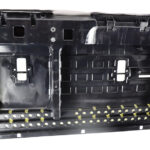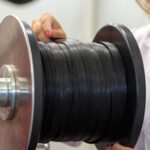When you think about Porsche’s 1960s sports racing cars, you likely don’t think of green energy, zero emissions vehicles, or how you would charge it if you had one. Then again, when you think about electric cars, your mind’s eye certainly doesn’t conjure the swooping curves and vintage good-looks of Porsche’s hillclimb hero 910. We’re equally as surprised that this car was made in the first place, and that it hadn’t yet been thought of. This low-drag coupe will surely make a great EV, and making use of twin electric motors and their instant-on torque delivery only serves to improve the performance numbers. Kreisel claims the car can shoot up to 60 from a standstill in just 2.5 seconds. Considering the car weighs just 2,425 pounds (thanks to 53-kWh worth of lightweight lithium-ion battery arrays) and is shoved around by a claimed 490 horsepower/568 lb-ft set of electric motors, that 0-60 time doesn’t seem all that farfetched.
EVEX is a fiberglass company that has been obsessed with Porsche designs for decades, having created a unique widebody slantnose kit for 911 Turbos in the 80s. Today, they build replica sports racers from glass-fiber reinforced plastics, including this 910 body that Kreisel has dumped some batteries into.
Both Kreisel and EVEX are small, niche manufacturer companies. Neither will be able to supply their section of these fantastic ZEVs in large quantities, meaning small batch production and by extension an expensive price tag. At the moment, they’re bandying around a one-million Euro buy-in price. It’s unlikely that you will ever rack up enough miles on your daily commute to recoup the purchase price in gasoline savings, but it sure as dollars to donuts will perform better than most anything with a traditional internal combustion engine. This is modern hypercar performance in a vintage shell.













